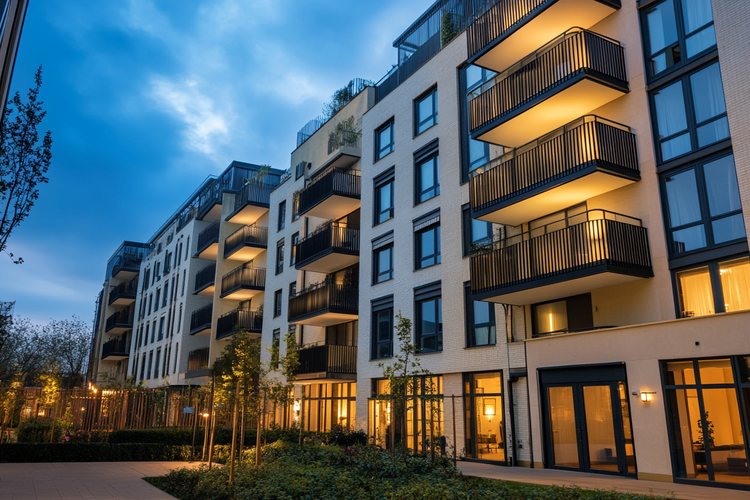The Micro-Apartment Revolution: Reimagining Urban Living Spaces
In a world where urban populations are soaring and city real estate prices are skyrocketing, a new housing trend is taking root: micro-apartments. These compact living spaces, typically under 400 square feet, are reshaping the landscape of urban real estate and challenging traditional notions of what constitutes a home. As cities grapple with housing shortages and affordability crises, micro-apartments offer a innovative solution that's capturing the attention of developers, investors, and city dwellers alike.

Designing for Efficiency: The Art of Micro-Apartment Layout
Micro-apartments challenge architects and designers to maximize every square inch of space. Innovative solutions include Murphy beds that fold into walls, convertible furniture that serves multiple purposes, and clever storage solutions integrated into unexpected places. Some micro-apartments feature sliding walls or modular components that can reconfigure the space for different needs throughout the day. The key is creating a sense of spaciousness within a limited footprint, often achieved through high ceilings, large windows, and open floor plans.
The Economics of Micro-Apartments: A Win-Win?
For developers, micro-apartments can yield higher returns per square foot compared to traditional apartments. By fitting more units into a building, they can potentially generate more rental income. For renters, micro-apartments often offer a more affordable entry point into desirable urban neighborhoods that might otherwise be out of reach. However, the per-square-foot cost of micro-apartments is typically higher than larger units, leading to debates about their true affordability and value proposition.
Demographic Drivers: Who’s Embracing Micro-Living?
Micro-apartments primarily appeal to young professionals, students, and singles who prioritize location over space. These demographics often value proximity to work, entertainment, and urban amenities more than having a large living area. Additionally, as remote work becomes more prevalent, some are choosing to downsize their living space in exchange for more flexibility in their lifestyle and finances. However, critics argue that micro-apartments may not be suitable for long-term living or for families, potentially leading to high turnover rates.
Regulatory Challenges and Urban Planning Implications
The rise of micro-apartments has prompted cities to reevaluate building codes and zoning laws. Some municipalities have had to create new categories or adjust minimum size requirements to accommodate these units. There are also ongoing discussions about the impact of micro-apartments on neighborhood density, infrastructure, and quality of life. While proponents argue that micro-apartments can help alleviate housing shortages, others worry about potential negative effects on community cohesion and long-term urban development patterns.
The Future of Micro-Apartments: Niche Trend or New Norm?
As urbanization continues and housing affordability remains a pressing issue, micro-apartments are likely to play an increasingly significant role in the real estate landscape. Some experts predict that the trend will expand beyond major cities to smaller urban centers and even suburban areas. Others speculate about the potential for micro-apartment communities that incorporate more shared spaces and amenities, blending private and communal living in new ways.
Investor Considerations: Opportunities and Risks
For real estate investors, micro-apartments present both opportunities and challenges. On one hand, they offer the potential for higher rental yields and can be an attractive option in markets with strong demand for affordable housing. On the other hand, the relatively new nature of this housing type means there’s less historical data to inform long-term performance projections. Investors need to carefully consider factors such as local regulations, target demographics, and potential resale value when evaluating micro-apartment investments.
Technological Innovations Enhancing Micro-Living
Technology is playing a crucial role in making micro-apartments more livable and efficient. Smart home systems can automate various functions, making the most of limited space. Virtual reality tours are becoming increasingly common, allowing potential renters to visualize the space and its potential configurations before committing. Some developers are even exploring the use of robotics to create transformable living spaces that can adapt to residents’ needs throughout the day.
The Environmental Angle: Sustainability in Small Spaces
Micro-apartments have the potential to contribute to more sustainable urban development. Smaller living spaces generally require less energy to heat and cool, and compact urban development can reduce sprawl and reliance on cars. Some micro-apartment buildings are incorporating green building techniques and materials, further enhancing their environmental credentials. However, the sustainability benefits must be weighed against potential drawbacks, such as increased strain on local infrastructure in densely populated areas.
In conclusion, the micro-apartment trend represents a significant shift in urban housing dynamics. As cities continue to evolve and adapt to changing demographics and economic realities, these compact living spaces are likely to play an increasingly important role in shaping the future of real estate. Whether viewed as a temporary housing solution or a long-term lifestyle choice, micro-apartments are challenging traditional notions of home and forcing a reevaluation of how we live in and develop our urban spaces. For investors, developers, and city planners alike, understanding and navigating this trend will be crucial in the years to come.





